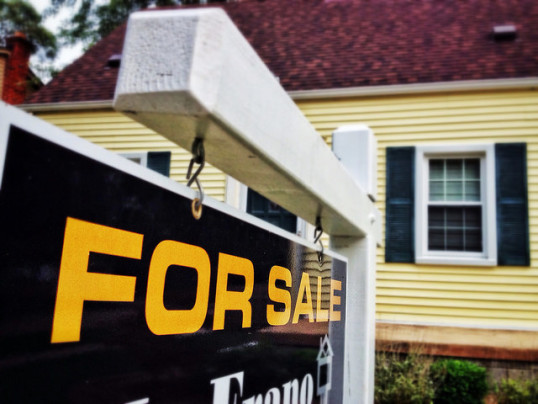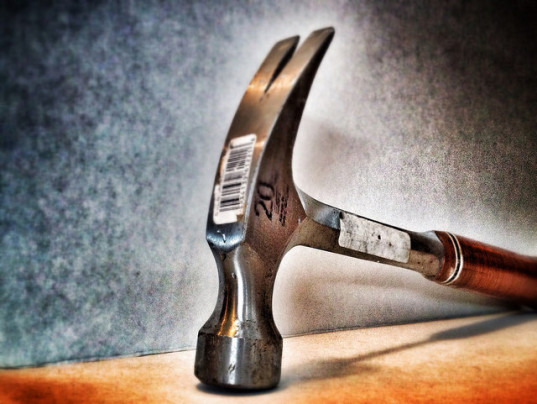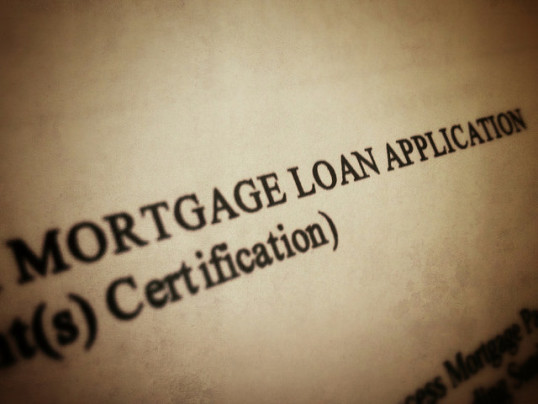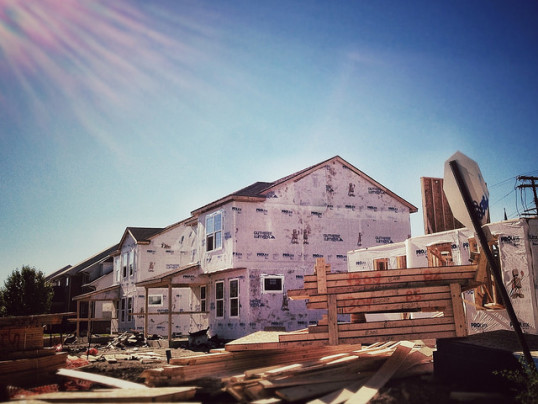According to the Mortgage Bankers Association’s Weekly Applications Survey, average mortgage rates on 30-year fixed-rate loans with conforming loan balances fell again last week. Rates on jumbo loans were unchanged, while loans backed by the Federal Housing Administration increased. Mortgage rates on 15-year fixed-rate loans were down from the week before. Despite favorable interest rates, however, demand for mortgage loan applications fell from the previous week. In fact, the Market Composite Index – which measures both purchase and refinance activity – was down 4.3 percent, after a 4 percent drop in the Refinance Index and a 5 percent decline in the seasonally adjusted Purchase Index. The dip in demand follows a surge the week before, when total demand was up 4.9 percent. Also in the report, the refinance share of total mortgage activity increased to 63 percent from 61 percent the week before. The MBA’s weekly survey has been conducted since 1990 and covers 75 percent of all retail residential mortgage applications. More here.
Archive for November 2014
Home Price Increases Continue To Slow
The S&P/Case-Shiller Home Price Indices are one among many measures of national home prices. However, their indexes are also among the most trusted measures of home values. According to their most recent release, home price increases continue to slow across the country with year-over-year gains falling in both the 10-city and 20-city composite indexes. David Blitzer, managing director and chairman of the index committee at S&P Dow Jones, says the overall trend in home price increases continues to slow down. According to Blitzer, recent housing statistics paint a mixed to slightly positive picture of the market. Single-family housing starts are gaining, sales of existing homes have improved, builder sentiment is on the rise, foreclosures continue to be worked off, and mortgage default levels are at pre-crisis levels, Blitzer says. Combined with an economy that has improved from last year, Blitzer believes the residential real-estate market should be stable to slightly better in 2015. More here.
Housing To Continue Upward Grind in 2015
The economy and housing market started the year off slow before picking up mid-year. Now, according to Fannie Mae’s Economic & Strategic Research Group, economic activity is slowing down from its mid-year surge and returning to a more sustainable pace. Doug Duncan, Fannie Mae’s chief economist, said – though consumers remain somewhat conservative and reluctant to take on significant credit and mortgage debt – strengthening employment numbers, growing household income, and improved confidence should eventually drive stronger consumption. According to Duncan, the housing market will continue to grind its way upward into next year, though Fannie Mae doesn’t expect a breakout year in 2015. Among their forecasts, they believe that home purchase activity will outpace refinance activity in the next year and housing starts, home sales, and home price trends will continue to make modest gains. Duncan says that mortgage activity in 2015 should be very similar to what it was in 2014. More here.
Existing Home Sales Rise Again
Sales of previously owned homes rose in October for the second straight month. The 1.5 percent improvement brought sales to their highest level since September 2013. It was also the first month home sales exceeded year-before levels in 12 months. Lawrence Yun, NAR’s chief economist, said sales activity in October was driven by low mortgage rates, stabilizing price growth, and improved inventory levels. And, according to Yun, this year’s increase in inventory should help prevent the price spike and sales slowdown seen last winter. Yun also believes the fact that the job market has shown continued strength for the past six months bodes well for additional sales improvement through the end of the year and into 2015. Regionally, sales were up in the Northeast, South, and Midwest, with the Midwest registering a 5.1 percent sales jump. Sales in the West declined. Also in the report, properties sold in October typically stayed on the market 63 days, which is just over a week longer than the month before. Among homes sold, 33 percent were on the market for less than a month. More here.
Single Family Housing Starts Jump 4.2%
The U.S. Census Bureau and the Department of Housing and Urban Development’s New Residential Construction report is a monthly estimate of how many new homes started construction during the month. The report also covers the number of permits to build new homes that were authorized. In October, both single-family authorizations and housing starts rose. The number of new homes that began construction jumped 4.2 percent and reached the highest rate since last November. Overall building permits also hit a high for the year, climbing nearly 5 percent from September’s estimate. Despite the improvements, however, analysts say November’s results are likely to be weaker than October’s due to the onset of colder weather across the country and the fact that month-to-month construction data tends to be volatile. In fact, though new residential construction is up nearly 8 percent over last year, monthly estimates have been largely up-and-down all year, plummeting one month and rising the next. More here.
Mortgage Demand Grows As Rates Drop
According to the Mortgage Bankers Association’s Weekly Applications Survey, demand for loans to buy homes increased 12 percent last week. The spike brought the seasonally adjusted Purchase Index to its highest level since July. Refinance activity also rose, climbing 1 percent over the previous week. Still, as a share of total mortgage application volume, refinance activity fell to 61 percent from 63 percent the week before. The overall improvement – which saw total demand for mortgage applications up 4.9 percent – may be due, in part, to an adjustment for the Veterans Day holiday, which could have skewed numbers higher. Still, mortgage rates fell on 30-year fixed-rate loans with both conforming and jumbo balances, as well as mortgages backed by the Federal Housing Administration. Rates on 15-year fixed-rate loans were unchanged from the week before. Low mortgage rates, combined with continued economic improvement, are expected to release pent-up housing demand and help boost home sales in the coming year. The MBA’s weekly survey has been conducted since 1990 and covers 75 percent of all retail residential mortgages. More here.
Builder Optimism Grows In November
The National Association of Home Builders Housing Market Index gauges builder confidence in the market for newly built single-family homes on a scale where any number above 50 indicates more builders view conditions as good than poor. In November, the index gained four points, reaching a level of 58. David Crowe, NAHB’s chief economist, said low mortgage rates, affordable home prices, and solid job creation are contributing to a steady housing recovery. According to Crowe, the year started slow but the index has been above 50 for five consecutive months and he expects that momentum to carry over into 2015. Also, all three components of the index – including current sales conditions, current buyer traffic, and future sales – registered improvement from the month before, with current sales conditions up 5 points from October. Regionally, the South, West, and Northeast all saw gains, while the Midwest slipped 2 points. More here.







